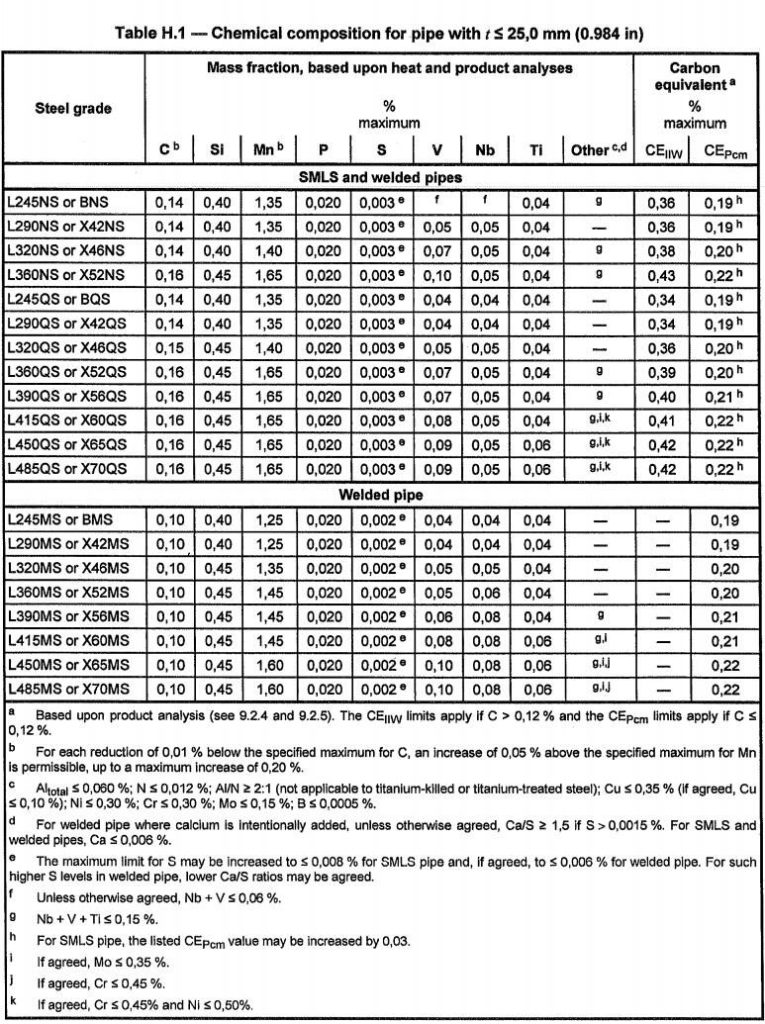In the realm of pipeline infrastructure, ensuring resilience against corrosive environments is paramount. Sour service steel pipes stand as stalwart defenders against the detrimental effects of corrosion, safeguarding both operational integrity and environmental well-being.
⚠️ Understanding the Risks: Corrosion in line pipes poses a significant threat to safety and longevity. Left unchecked, it can lead to oil and gas leaks, and in severe instances, catastrophic explosions. The stakes are high, with potential consequences ranging from economic loss to environmental contamination and even endangerment of lives.
🛠️ The Solution: Sour Service Pipes: Enter sour service steel pipes, meticulously crafted to withstand the rigors of corrosive environments. Engineered with advanced materials and manufacturing techniques, these pipes offer a robust defense against the corrosive elements present in sour gas and crude oil.
🔬 Meeting Stringent Standards: In the production of sour service pipes, adherence to rigorous manufacturing and inspection standards is paramount. The industry relies heavily on the guidelines set forth by API Spec 5L, ensuring that each pipe meets the stringent criteria necessary to operate safely and effectively in corrosive conditions.
🌐 A Global Imperative: The demand for sour service pipes transcends geographical boundaries, with industries worldwide relying on their resilience and reliability. From remote oilfields to sprawling urban networks, these pipes serve as lifelines, facilitating the safe and efficient transport of vital resources.
🤝 Our Commitment: At [Your Company Name], we recognize the critical role sour service pipes play in safeguarding infrastructure and communities. With a steadfast commitment to quality, safety, and sustainability, we endeavor to deliver superior products that meet and exceed industry standards, ensuring peace of mind for our partners and customers alike.

1. Sour Service Pipe: Understanding its Definition
Sour service pipes find primary application in environments containing hydrogen sulfide (H2S), a chemical known for its corrosive properties. International regulations stipulate that when the partial pressure of H2S exceeds 300 Pa, pipeline materials must demonstrate resistance to acidic corrosion. These specialized pipes, often referred to as NACE pipes, meet such stringent criteria.
2. Crafting Sour Service Pipes: A Technical Insight
In adherence to API Spec 5L standards, sour service pipes are crafted from purity fully-killed steel, a departure from the grain-killed steel commonly employed for regular line pipes. This emphasis on purity ensures minimal levels of sulfur (S), phosphorus (P), and other impurities, crucial for combating corrosion.
Furthermore, meticulous control and inspection of inclusion shapes in pipeline steel are mandated. The occurrence of hydrogen-induced cracking, primarily influenced by inclusion morphology, necessitates such scrutiny. Additionally, during the controlled rolling process inherent to pipeline steel production, deformations may occur, resulting in linear or elongated inclusions along the rolling direction. To mitigate this, stringent controls over slag formation are enforced to enhance the corrosion resistance of the steel.
3. Chemical Properties of Sour Service Pipes
The chemical composition of sour service pipes is characterized by comparatively lower levels of carbon (C), phosphorus (P), sulfur (S), and carbon equivalent when compared to standard line pipes. Of particular concern is sulfur, an element notorious for exacerbating corrosion in harsh environments. To this end, sour service pipes are subjected to strict control measures, with sulfur content capped at a maximum of 0.002%.

Factors Affecting Sour Service Pipe Integrity
- Carbon and Carbon Equivalent (CCE):Increasing carbon content enhances HIC sensitivity;Lowering CCE improves H2S corrosion resistance and reduces harmful martensite formation in hot rolled steel.
- Phosphorus (P) Element:Higher phosphorus levels lead to increased banded structure and heightened HIC sensitivity due to segregation tendencies.
- Sulfur (S) Element:Elevated sulfur content promotes HIC formation, worsening SSC resistance in pipes.
- Manganese (Mn) Element:Mn enhances steel strength while influencing HIC resistance differently based on carbon content:For carbon content of 0.05% to 0.15%, 1.0% Mn drastically increases HIC sensitivity;Quenched and tempered steel's HIC resistance is minimally affected by 1.6% Mn;<0.02% carbon content ensures good HIC resistance even with >2.0% Mn.
- Hardness Requirement:Strict hardness criteria are essential for sour service pipes, as higher hardness exacerbates HIC sensitivity, especially in low and medium strength steels.
- Corrosion Testing:API 5L mandates a maximum base metal, weld, and hot zone hardness of 250 HV10 for sour service pipes. Higher material strength correlates with increased hardness and HIC sensitivity in low and medium strength steel.
Mechanical Properties of API 5L Pipes for Sour Service









